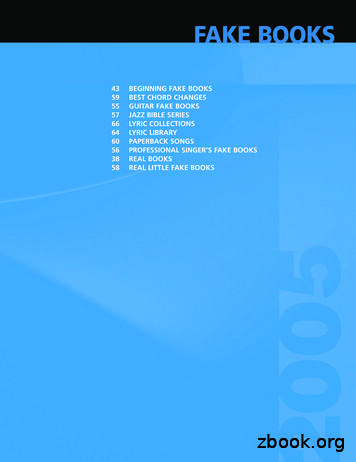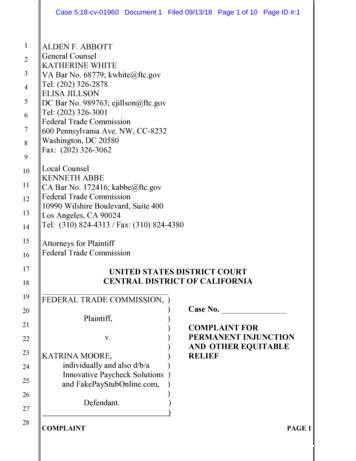Princeton, West Virginia Fake Cancels - Jlkstamps
Princeton, West Virginia Fake Cancels Wayne Farley Recently, I purchased a cancelled 20-cent green (Scott No. 13) on piece through eBay (Figure 1). It was described only as being from somewhere in Virginia with nice margins. Gene Lightfoot had seen the listing and quickly realized that the town cancel was from Princeton, (West) Virginia. Knowing my interest in West Virginia Confederates, and also knowing that I had purchased a legitimate Princeton Confederate cover within the past year or so, he "shot" me an email about the eBay listing and the rest is history. Although not really surprised about winning the stamp against no other bidders, what I found out some two days after the closing on eBay was very surprising to me and forms the basis for this article. Knowing full well that no known examples of cancels exist on Scott No. 13 from West Virginia, I went to the latest (1986) Dietz Catalog to study the issue and quickly found the listing for the Princeton, Virginia fake on page 167. The description reads as follows: "The fake Princeton postmark shown above (Figure 2) was struck on covers with singles or bisects of the 20c green or on covers with the 2c brown red." This town did exist in what later became West Virginia, but no genuine Confederate postmark is recorded from Princeton, Virginia. 1
The listing in Dietz shows the same date as the stamp that I purchased -- April I9, with no year date. I waited impatiently for two days for my stamp to arrive. After receiving it, I studied it further against my known Confederate cover (Figure 3) and four other similar style prewar cancels (Figure 4) owned by myself and Gene Lightfoot. The history of this Princeton hand stamp cancel is interesting. Apparently, all five of these legitimate examples have turned up in the past ten to 15 years and after the latest edition of Dietz. The cancels range in date from the late l850s to January 1862 with the ink used varying from black to dark blue to olive brown. The circular date cancel incorporates Roman style lettering with serifs, measures about 32mm on all examples, and utilizes the capital letters “VA” for Virginia. All uses prior to 1855 that are known from Princeton are manuscript cancels. In comparing the cancel found on the recently purchased stamp, I find that it overlays perfectly the cancels found on the covers. I submit that all of the cancels originate from the same cancelling device on the covers, on this recently purchased stamp, and some other known stamp examples (Figure 5) which were supplied by Peter Powell and Frank Crown through the CSA Authentication Service over many years. 2
It is interesting to note that all known examples of the "fake" cancel are not on "covers." as listed in Dietz, but are only found on used stamps or stamps cut down "on piece". I have found no one in the CSA, as yet, that has seen fake examples on full cover. It is my belief that these "fake" cancels are from a legitimate canceller that was found years after the Civil War and unscrupulously used by someone to "enhance" the value of scarcer unused stamps of the Confederacy. The history of these "fake" cancels from Princeton goes back at least to the early 1920s (Figure 6). 3
Peter Powell claims it would have been very difficult to have obtained a good quality photo in 1920 in which to make an illegitimate zinc plate canceller, something that was done years later by counterfeiters such as John Fox. In comparing all of the cancels, there is a slight variation in some of them, with some of the letters appearing thicker on some and clearer on others. This variation is due to: (a) how hard the canceller was struck, (b) more pressure being applied on one side of the canceller than the other, (c) how much ink was picked up by the canceller, and (d) the canceller when used illegitimately on the stamps appears to have been "cleaned" with the letters appearing "sharper" and similar to one of the prewar examples on cover -- when the device was new. Upon review of the history of Princeton, "West" Virginia during the Civil War, the following history was obtained online through the West Virginia Archives & History website: "On May 1, 1862, a Union regiment commanded by future President Rutherford Hayes and including another future President, William McKinley, fought a 13-hour battle through Mercer County and forced Confederates to evacuate Princeton. Even though most of Princeton's residents sympathized with the South, the rebel troops under Colonel W.H. Jenifer set fire to the town. Jenifer wanted to prevent Confederate supplies from falling into Union hands. The fire destroyed nearly all of Princeton, including the Mercer County Courthouse. Only the jail and ten private homes survived." Very little military activity occurred in Princeton during the remainder of the war. It seems extremely improbable then, that "legitimate" 2 cent and 20 cent usages of Confederate stamps could have occurred in 1863 or 1864 in the virtually destroyed town of Princeton. Factor in also that the only known dates found on the 2-cent and 20-cent stamps are April 19 and October 12. The faker of these cancels wasn't very good about covering his tracks by using multiple dates. 4
Also, the fact that no other "fake" cancels are known on the more common Confederate stamps makes this argument for "illegitimate use" even more compelling. The only reasonable explanation for these "fake" cancels is that the retreating Confederates or the postmaster in Princeton saved the canceller from destruction by fire and it surfaced many years later. It would make for an interesting dilemma for the CSA Authentication Service if a cancel WERE found on a more common Confederate stamp and with a different date. Perhaps the canceller still lurks out there awaiting further "unscrupulous" use? In closing, T probably could have gotten a refund on my eBay purchase of the stamp. But the fun of the ensuing research has overshadowed any small loss that occurred to me. Hopefully this small article will help others to evaluate cancels very closely when purchasing scarcer Confederate stamps and covers. Thanks to Gene Lightfoot, Peter Powell and Frank Crown for their insight, help and encouragement. References: 1) The New Dietz Confederate States Catalog and Handbook. H.C. Skinner, E. R. Gunter, and W.H. Sanders Editors. Bogg & Laurence Publishing Company, Miami FL. 1986, pages 166-167. 2) CSA Authentication Service File 01648. 3) l#50I - May 1, 1862: Burning of Princeton during the Civil War 5
Princeton, West Virginia Fake Cancels Wayne Farley Recently, I purchased a cancelled 20-cent green (Scott No. 13) on piece through eBay (Figure 1). . history was obtained online through the West Virginia Archives & History website: "On May 1, 1862, a Union regiment commanded by future President Rutherford Hayes and including another
Robert Kiyosaki: Fake: Fake Money, Fake Teachers, Fake Assets Book Summary -Introduction: The Future is Fake - How My Generation Broke America - The elites got greedy taking care of themselves, at the expense of others. - The elites focused on making themselves rich, rather than creating new businesses,
-PART ONE: FAKE MONEY - In 1971, President Richard Nixon took the U.S. dollar off the gold standard. In 1971, the U.S. dollar became fiat money government money. Rich dad called government money fake money. He also said: Fake money makes the rich richer. Unfortunately Fake money also makes the poor and middle class poorer.
fake letter template, fake irs letter template, fake job offer letter template, fake speeding ticket letter template, fake solicitors . dummy resume text . fake job offer letter template. Use this service if you have been told to self-isolate because of co
FAKE BOOKS 43 BEGINNING FAKE BOOKS 59 BEST CHORD CHANGES 55 GUITAR FAKE BOOKS 57 JAZZ BIBLE SERIES 66 LYRIC COLLECTIONS 64 LYRIC LIBRARY 60 PAPERBACK SONGS 56 PROFESSIONAL SINGER’S FAKE BOOKS 38 REAL BOOKS 58 REAL LITTLE FAKE BOOKS. F A K E B O O K S 38 FAKE BOOKS The Real Books are the best-sel
9. Through the Fake Pay Stub Website, Defendant sells fake pay stubs for 40 to 80, fake income tax forms (W-2 and 1099 forms) for 75, fake tax returns starting at 150, fake bank statements for 125, and fake profit and loss statements starting at 100. See Exhs. A-I. 10. Pay stubs,
fake news through trading activity, including spillover effects on non-fake news. Section5 analyzes the price impact of fake news and Section6seeks to understand the motivation behind fake news by looking at coordinated corporate actions and insider trading around thefakearticles. Section7concludes. 2.Data and Identifying Fake News
Episode #102: What is the global effect of fake news? The Guardian on fake news algorithms for Facebook, a Stanford research paper, Wiki on fake news, fake news on social media about shooting in Las Vegas, the history of fake news. Leading thinkers are breaking their heads over how to stem
interface (API) used in a GEANT4 application. A simple application will use concrete classes provided with the toolkit, the developer will provide the detector description a primary generator (possibly using one of the general purpose ones provided with the toolkit), define the physics for the application (the physics list, possibly one of the few provided with the toolkit) and optional user .























